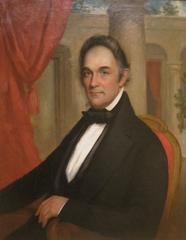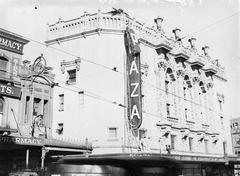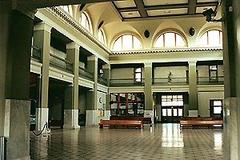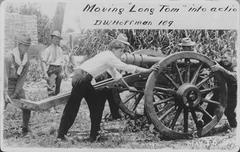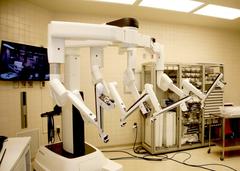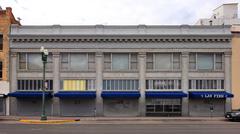Smeltertown Visiting Hours, Tickets, and Historical Sites in El Paso: A Comprehensive Guide
Date: 14/06/2025
Introduction
On the western edge of El Paso, Texas, Smeltertown—known locally as “La Esmelda”—stands as a profound symbol of industrial ambition, community resilience, and environmental reckoning along the U.S.-Mexico border. Founded in the late 19th century during the rise of the American Smelting and Refining Company (ASARCO), Smeltertown was more than an industrial complex; it was a vibrant, self-sustained community where Mexican immigrant laborers and their families forged their own cultural and social identity. Iconic landmarks like the San José Del Rio Catholic Church and the Cristo Rey Monument atop Mount Cristo Rey became central to local heritage, while the towering ASARCO smokestacks marked both progress and the environmental challenges that led to the area’s decline.
While most of the original community has been dismantled due to health and environmental concerns, important remnants like the Smeltertown Cemetery and the La Calavera Historical Neighborhood remain. These sites offer modern visitors a tangible link to the region’s complex history. This guide provides in-depth information on Smeltertown’s history, visiting hours, accessibility, travel tips, safety, and nearby attractions—equipping you to experience this unique chapter in El Paso’s story.
For additional planning, visit the El Paso Visitors Guide and App and the El Paso Museum of History.
Table of Contents
- Origins and Industrial Foundation
- Community Structure and Daily Life
- Cultural and Religious Significance
- Economic Role and Industrial Expansion
- Environmental Challenges and Decline
- Legacy and Commemoration
- Visiting Hours, Tickets & Guided Tours
- Accessibility and Visitor Tips
- Nearby Attractions
- Frequently Asked Questions (FAQ)
- Visuals and Maps
- Plan Your Visit and Stay Connected
- References
Origins and Industrial Foundation
Smeltertown originated in the late 19th century when the Kansas City Consolidated Smelting and Refining Company recognized El Paso’s strategic crossroads location. In 1899, ASARCO acquired the facility, transforming it into a major center for refining copper, lead, and other ores (historic marker). The demand for labor shaped the neighborhood, attracting thousands of Mexican immigrants who built a thriving community on company land (Wikipedia).
Community Structure and Daily Life
The neighborhood was divided into El Alto (Upper Smeltertown) and El Bajo (Lower Smeltertown), with La Calavera (Skull Canyon) still visible today along the road to the Smeltertown Cemetery (historic marker). Community life flourished with local businesses, a Y.M.C.A. branch, and the E.B. Jones School serving children (Wikipedia). Streets memorialized residents lost in World War II, and San José Del Rio Catholic Church anchored spiritual and social life.
Cultural and Religious Significance
Catholicism and Mexican traditions were central in Smeltertown. Annual festivals and processions, culminating in pilgrimages to Mount Cristo Rey, fostered a strong sense of community. The Cristo Rey Monument, erected in 1940, is a regional landmark that continues to draw visitors (historic marker).
Economic Role and Industrial Expansion
At its peak, Smeltertown was defined by the ASARCO smelter, brick and cement plants, and a limestone quarry, providing employment for most residents (historic marker). The towering smokestacks became integral to El Paso’s skyline and the city’s economic development.
Environmental Challenges and Decline
By the 1970s, environmental and health concerns—especially lead contamination—became acute. Soil and air pollution prompted authorities to demolish homes and relocate families, transforming Smeltertown into a ghost town (historic marker; Wikipedia). The ASARCO plant continued operating until 1999 and is now a Superfund site undergoing remediation.
Legacy and Commemoration
Today, Smeltertown’s spirit lives on through community reunions, the preservation of the cemetery, and the Cristo Rey Monument. Local historical markers and museum exhibits document its industrial, cultural, and social contributions (historic marker).
Visiting Hours, Tickets & Guided Tours
Smeltertown Cemetery and La Calavera Historical Neighborhood are accessible year-round during daylight hours. There are no entrance fees or tickets required. Optimal visiting hours are 9 AM to 5 PM for safety and visibility. The rest of the former community is not open to the public due to ongoing environmental remediation. The main ASARCO site remains closed.
Guided tours are occasionally offered by local historical societies and the El Paso Museum of History. Check their websites or contact them directly for current schedules and availability.
Accessibility and Visitor Tips
- Parking: Limited parking is available near the cemetery; be mindful of signage and private property.
- Terrain: Paths are uneven and not wheelchair accessible; sturdy shoes are recommended.
- Facilities: No restrooms or visitor amenities are onsite. Bring water and supplies.
- Safety: Stay on designated paths, avoid direct contact with soil, and supervise children.
- Photography: The cemetery, murals, and views from Mount Cristo Rey are excellent photo opportunities.
- Environmental Precautions: Do not dig or interact with the soil due to historical contamination.
Nearby Attractions
- Mount Cristo Rey: Iconic pilgrimage site with a remarkable summit monument and hiking trails (Mount Cristo Rey Pilgrimage Details).
- El Paso Mission Trail: Features some of the oldest missions in the U.S.
- Keystone Heritage Park and Desert Botanical Gardens: 52-acre preserve with wetlands and native plants (Keystone Heritage Park).
- Downtown El Paso: Museums, galleries, and historical sites, including the El Paso Museum of History.
- Chamizal National Memorial: Interprets U.S.-Mexico border history (Happy to Be Texas).
Frequently Asked Questions (FAQ)
Q: Are there entrance fees to visit Smeltertown?
A: No, the cemetery and neighborhood remnants are free to visit during daylight hours.
Q: What are the best visiting hours?
A: Daylight hours, typically 9 AM – 5 PM, are recommended for safety.
Q: Is Smeltertown suitable for children and families?
A: Yes, but supervise children due to uneven terrain and environmental sensitivities.
Q: Are guided tours available?
A: Occasionally, through local historical societies and museums—check their websites for updates.
Q: Is the site wheelchair accessible?
A: No, terrain is rugged and not suitable for wheelchairs.
Q: Are drones allowed for photography?
A: Drone use is generally restricted due to proximity to the border and industrial sites; verify local laws before flying.
Visuals and Maps
Enhance your visit by exploring interactive maps and digital archives via the UTEP Library Digital Collections. High-quality photos and virtual tours are available through museum websites and local archives.
Plan Your Visit and Stay Connected
- Download the El Paso Visitors Guide and App for current information.
- Explore regional sites like the Mission Trail and Magoffin Home.
- Follow local museums and historical societies on social media for tour announcements and historical content.
- Share your experiences using #VisitElPaso.
Emergency Contacts
- Police/Fire/Medical: 911
- El Paso Police Department (non-emergency): +1 915-832-4400
- Nearest Hospital: Las Palmas Medical Center, 1801 N Oregon St, El Paso, TX 79902
Conclusion
Smeltertown’s legacy is woven into El Paso’s narrative of industrial growth, environmental justice, and cultural identity. Although the physical community has largely disappeared, its spirit endures through preserved sites, commemorations, and educational resources. By visiting respectfully and informed, you contribute to the ongoing story of this remarkable borderland community.
For further exploration, download the Audiala app for offline maps and audio guides, check our related posts, and follow us on social media for updates and travel inspiration.
References
- Visiting Smeltertown, El Paso: Hours, Tickets, History & Nearby Attractions, 2025, (historic marker)
- Smeltertown History and Visiting Information | El Paso Historical Sites, 2025, (El Paso Museum of History)
- Smeltertown Visiting Guide: Hours, History, and Things to Know in El Paso, 2025, (TSHA Handbook)
- Visiting Smeltertown, El Paso: Hours, Tickets, History, and Travel Tips, 2025, (El Paso Visitors Guide and App)
- UTEP Library Digital Collections: Smeltertown
- Mount Cristo Rey Pilgrimage Details
- Keystone Heritage Park
- Happy to Be Texas: Things to Do in El Paso




